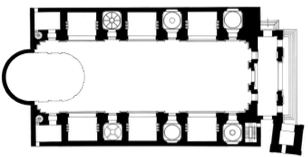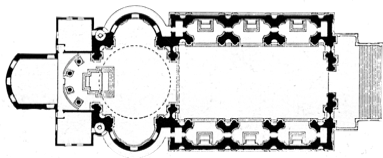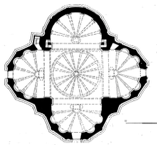This is the third of three articles that deal with the influence that San Miniato al Monte exerted over Filippo Brunelleschi and Leon Battista Alberti.
The first article considers San Miniato from a historical perspective, using 1207, the year the facade was completed and San Miniato had reached its most architectonic and pure expression.
The second article—From San Miniato to Sant'Andrea, The Clarification of a Renaissance Ideal— traces how Alberti reinterpreted elevational motifs implicit in San Miniato, over and over, until they are barely recognizable in his final church design for Sant'Andrea in Mantova.
This third article—From Sant’Andrea to Il Redentore—traces how the nave plans of San Miniato and Sant'Andrea fell out of favor and how subsequent architects, notably Andrea Palladio, invented ways that church plans could be interpreted as nave and central plans, simultaneously.
These are updates of papers from two decades ago as coursework for the Syracuse University Florence Program.
The formatting remains paginated to allow for the creation of PDFs.
+
=


